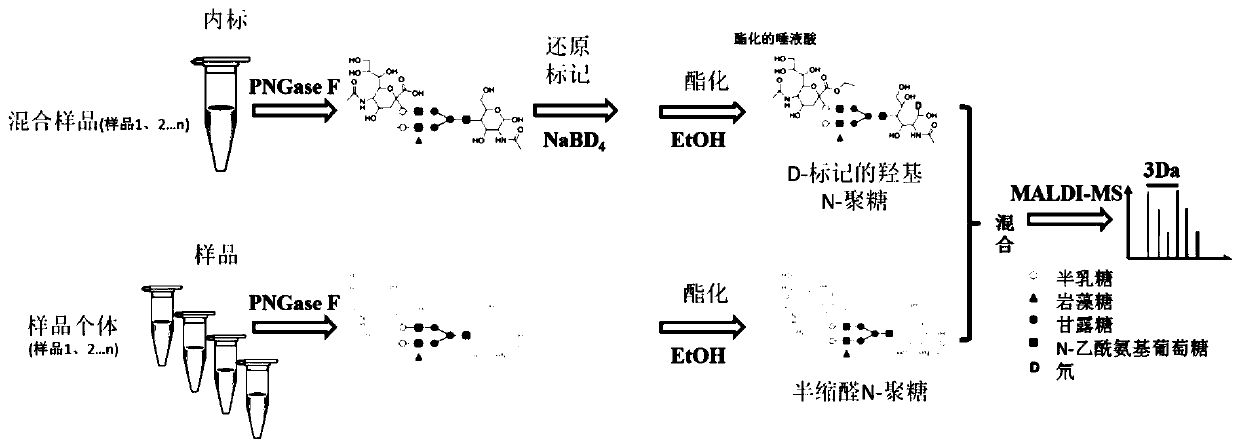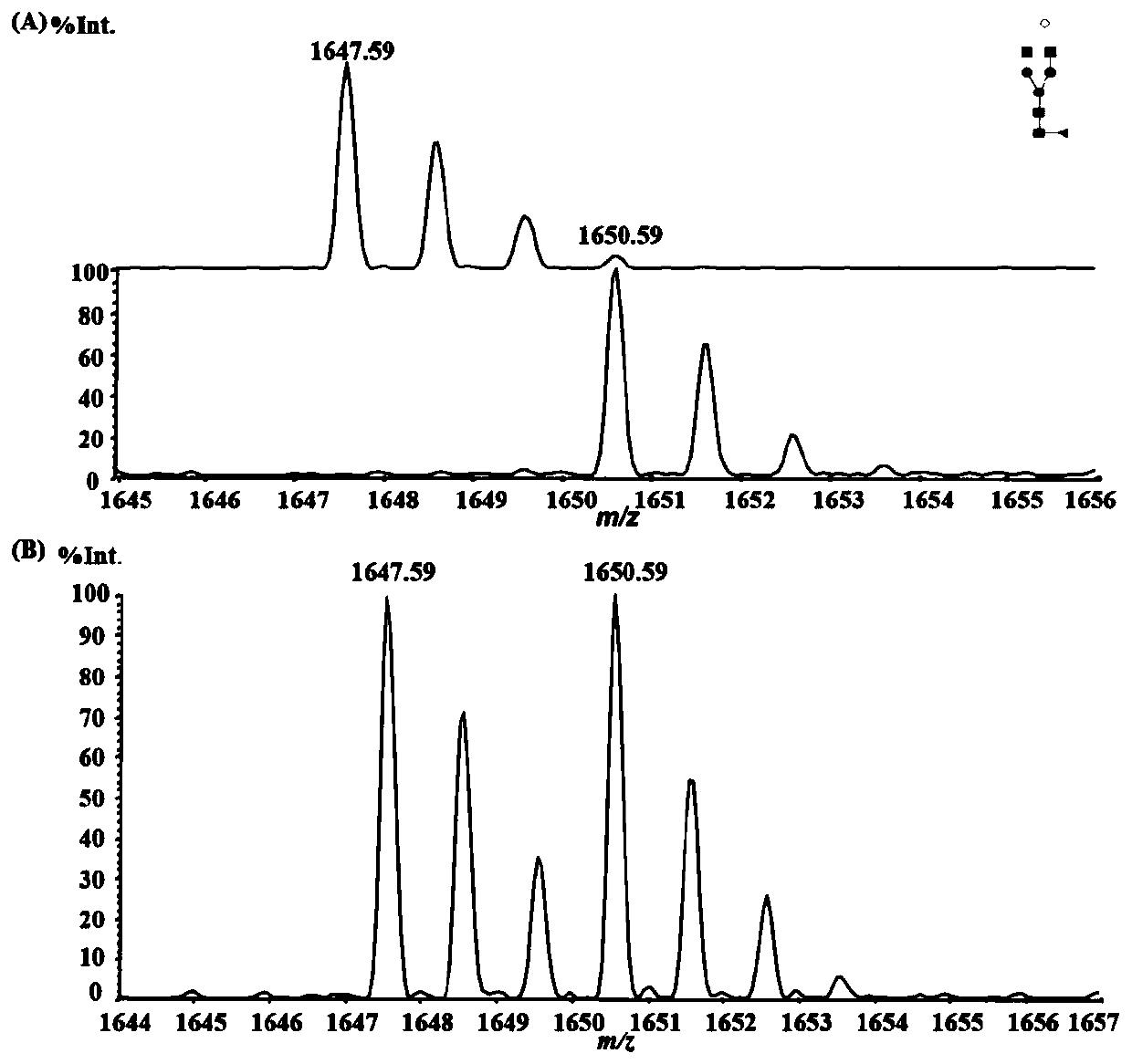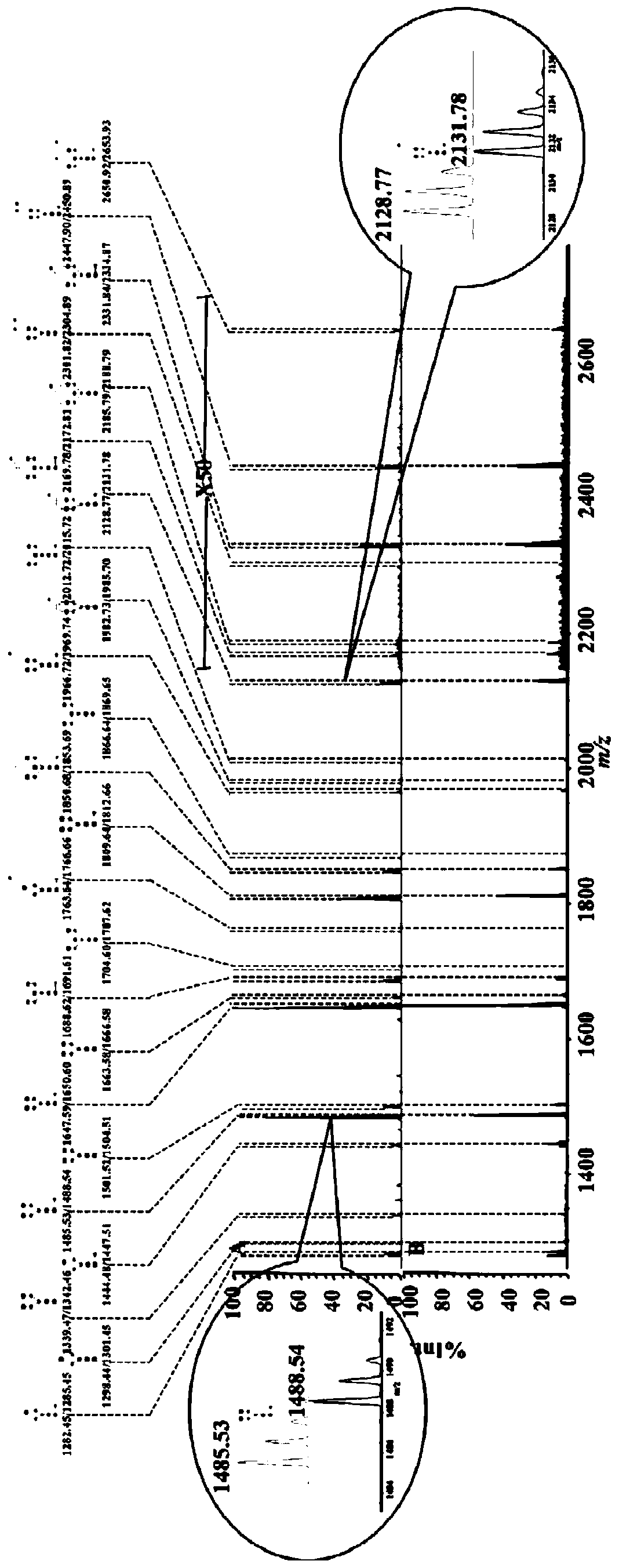Isotope-labeled bionic sugar or sugar group and preparation method and applications thereof
A technology of isotope labeling and biomimetic sugar, which is applied in the fields of analytical chemistry, medicine and biotechnology, and can solve the problems of cumbersome operation, high experiment cost and differences
- Summary
- Abstract
- Description
- Claims
- Application Information
AI Technical Summary
Problems solved by technology
Method used
Image
Examples
Embodiment 1
[0127] Example 1. Investigation of linear relationship and coefficient of variation based on sugar chain standards and glycoprotein standards
[0128] Taking the N-sugar chain standard NA2G1F and the glycoprotein standard IgG as examples for quantitative analysis, the linear relationship of the quantitative analysis of this method is investigated, including the following steps:
[0129] 1. Preparation of standard samples
[0130] 10 μg of sugar chain standard product NA2G1F (purchased from Ludger Company, the same below) was dissolved in 200 μL of ultrapure water to prepare a storage solution with a concentration of 0.05 mg / mL.
[0131] Dissolve 1 mg of glycoprotein standard IgG (purchased from Sigma-Aldrich, Cat. No. I4506, the same below) in 200 μL of normal saline (0.85% NaCl) to prepare a stock solution with a concentration of 5 mg / mL.
[0132] 2. Enzymatic hydrolysis of sugar chains of glycoproteins
[0133] Take 20 μL of glycoprotein IgG stock solution, add 40 μL of 2%...
Embodiment 2
[0155] Example 2. Analysis of sugar chains in serum samples
[0156] In order to further verify the applicability of the quantitative method in this paper in complex biological samples, we verified the application of this quantitative method in the quantitative analysis of human serum N-glycan groups through multiple repeated analysis experiments.
[0157] 1. Serum sample collection and storage
[0158] Blood samples were collected from the Cancer Hospital Affiliated to Fudan University. All experimental operations and research contents were approved by the Ethics Committee of Cancer Hospital Affiliated to Fudan University, and written informed consent was obtained from all subjects before sample collection.
[0159] The serum separation method was carried out according to the routine operation: firstly, 5 mL of venous blood was drawn, and it was placed in a coagulation-promoting tube at room temperature for 30 minutes. After coagulation, it was centrifuged at 3,000 rpm for 1...
Embodiment 3
[0182] Embodiment 3. same day reproducibility investigation
[0183] On the same day, take a serum sample and process it as an internal standard according to the internal standard process, and take the same serum sample at the same time, and divide it into 3 parts and process it according to the sample process. The internal standard serum samples processed according to the internal standard procedure were mixed with the three samples respectively, and then mass spectrometry analysis was performed as described above.
[0184] After data analysis and processing, it can be seen that the average coefficient of variation (CV) of the 20 most abundant sugar chains is only 4.6%, which is significantly lower than the existing quantitative methods of N-glycomics (CV: 14.2%) (Vreeker, G.C.M.; Nicolardi, S.; Bladergroen, M.R.; van der Plas, C.J.; Mesker, W.E.; Tollenaar, R.; , 90(20), 11955-11961).
[0185] The results show that the quantitative method has excellent quantitative reprodu...
PUM
 Login to View More
Login to View More Abstract
Description
Claims
Application Information
 Login to View More
Login to View More - R&D
- Intellectual Property
- Life Sciences
- Materials
- Tech Scout
- Unparalleled Data Quality
- Higher Quality Content
- 60% Fewer Hallucinations
Browse by: Latest US Patents, China's latest patents, Technical Efficacy Thesaurus, Application Domain, Technology Topic, Popular Technical Reports.
© 2025 PatSnap. All rights reserved.Legal|Privacy policy|Modern Slavery Act Transparency Statement|Sitemap|About US| Contact US: help@patsnap.com



